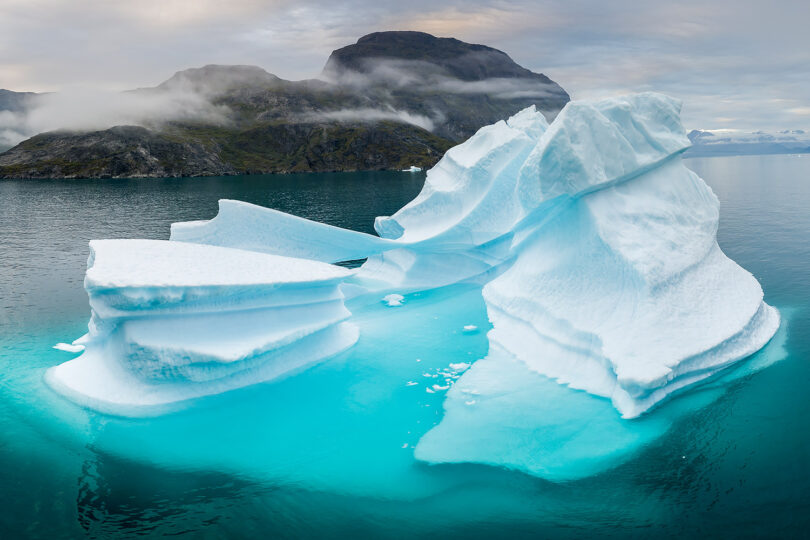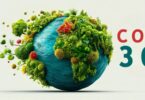Around the world, water shortages are causing droughts, health problems, and even conflicts. Demand for freshwater will outstrip supply by 2030, fuelled by population growth, industry, climate change, and poor groundwater management. Natural aquifers are emptying rapidly and freshwater is now a precious resource.
While we conserve and recycle water to eke out resources, unlocking new freshwater reserves could alleviate the problem. Experienced water industry investor, Thomas Schumann, believes that arctic glaciers could provide the renewable water we need.
Global Freshwater: A Dwindling Resource
Freshwater stocks are threatened and, with the global population predicted to hit 10 billion by 2050, we must stretch resources even further. Another issue is urbanization: 70% of people will live in cities by 2050, and Thomas notes, “There simply isn’t enough freshwater in these regions to support the demands for drinking, residential, industrial, commercial, agricultural use, and energy production.”
We cannot ignore climate change, because 2.4 billion people live in water-stressed areas. This will increase to at least 2.7 billion by 2030 and global freshwater demand will outstrip supply by 40% in 2030.”
The cost in human lives from disease, conflict over dwindling resources, and forced migration is immeasurable. The aquifers that served humanity for millennia are emptying and cannot replenish quickly enough. In Thomas’ view “global stakeholders are best prepared by immediately heeding the UN experts’ Call to Action ‘to tap the Earth’s abundant unconventional water resources — such as those found deep underground or in icebergs.’”
Water from the Arctic
For many years, scientists suggested floating icebergs from arctic regions to drought-stricken areas, but these ideas met technical issues or financial constraints. With newer technology and with water shortages more acute, the landscape has changed. Now, Thomas is bringing this idea to reality with Project Greenland and Project Alaska, capturing pristine melting freshwater from glaciers and transporting it south.
Greenland’s icecap holds 10% of the world’s freshwater, offering abundant ancient water free from modern pollutants. In 2017, Greenland’s government published a strategy for extracting glacial meltwater to supply overpopulated urban areas with depleted freshwater resources.
This new source of freshwater could support humanitarian relief, which already transports water by tanker. The water could benefit commerce and industry, and removing the meltwater on a large scale could mitigate rising seas. In 2019, 530 trillion litres melted into the sea, making Greenland’s icecap the major contributor to sea level rises.
In principle we already have the technology, but is it economically, environmentally, and politically feasible?
From Vision to Reality
Thomas believes that the market conditions are ready for Project Greenland and Project Alaska. The estimated global freshwater market will climb from $843 Billion in 2022 to $1,142 Billion in 2030, making the trade in glacial water viable. This is Thomas’ speciality, “I am a socially and environmentally responsible investor, entrepreneur, and banker with a single-minded focus and investment solutions to accelerate SDG 6 ‘Water Security.’ I also created the world’s first equity index family to qualify and quantify water risk for global capital markets, and I am convinced that freshwater harvesting and transfer represent the single largest impact investment opportunity of our times.”
Competition for freshwater is downstream, where suppliers fight over existing water resources, so adding water upstream will expand the market and meet growing demand. Although desalination can help, it requires energy and large initial investments, making it viable only in arid regions.
Harvesting glacial water is a lower-technology, maturing solution that is sustainable because it uses water that would otherwise reach the oceans and contribute to sea level rise. There are some concerns because, as Thomas points out, “the greenhouse gas emissions from transporting any goods, including bulk freshwater, by sea require the global shipping industry to pivot to sustainable, low to no-carbon transportation such as wind and solar.”
However, the water requires very little treatment, producing fewer emissions, and the shipping industry is working towards net zero. Indeed, for comparison, what is the contribution of building huge dams or long pipelines?
Furthermore, for Greenland, Alaska, and other areas, glacial water harvesting can provide economic independence. Many of these areas produce hydrocarbons and will need alternative income as humanity weans itself off fossil fuels.
The First Steps
Glacial water harvesting is already underway, with programs such as Greenland’s Inland Ice Water and Icelandic Glacial Water showing the investment potential. Project Greenland will supply Europe and the Middle East, while Project Alaska will supply Asia and the Americas with a combined available supply of more than 150 trillion litres of fresh, clean water in the next 20 years.
Glacier water harvesting is sustainable, could balance global water demand, and with little treatment needed, is perfect for less developed regions. With the potential to alleviate water stress for millions of people, the two projects reveal an exciting future.
Imagine low-emission tankers, each transporting a minimum of 40,000,000 – 50,000,000 litres of water to corporates, municipalities, and drought-stricken regions. Thomas believes that “While reducing, recycling, and reusing freshwater remains the single most important and effective stewardship, these projects will advance the UN’s goals for sustainability.”







